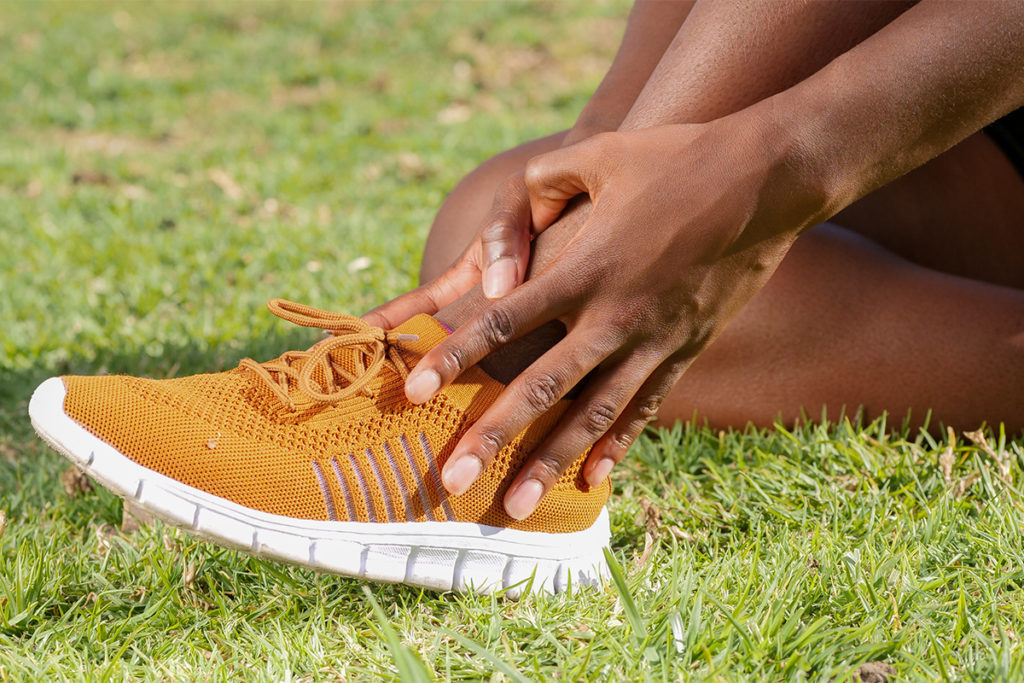High Risk for Recreational Running Injuries
A study finds that nearly half of recreational runners will experience an injury.

Recreational running injuries have been taking the fun out of lacing up those sneakers for years. If one of your client’s goals is to begin running for pleasure and cardiovascular fitness, you may want to design a program that helps them avoid injuries.
Roughly half of runners will experience recreational running injuries, regardless of age, gender or running experience, according to a study that is a thesis within sports science from the University of Gothenburg, Gothenburg, Sweden. Further, most recreational running injuries relate to knees, calves or Achilles tendons.
Doctoral student Jonatan Jungmalm recruited more than 200 recreational runners and monitored them for 1 year. All participants had been running for at least a year, ran an average of at least 15 km per week over the prior year and had been injury-free for at least 6 months. The participants were men and women in the 18-55 age range, and they were put through a series of physical assessments beforehand that tested strength, mobility and running style.
During the study, the runners used a training diary to track how far they ran every day and whether they felt any pain. Those who experienced a sudden injury or felt pain for an extended amount of time were examined by a sports doctor.
Results showed that, when factoring in the number of participants who dropped out of the study, nearly half of them experienced recreational running injuries. Additionally, participants who had weaker outer thighs and who pronated late in their running gait had a higher risk of injury. Weak torso or limited muscle flexibility did not have any influence on injury risk.
“A third of the participants were injured over the course of the study,” said Jungmalm in an official press release. “But if you also take account of the participants who dropped out of the study, it is reasonable to assume that almost half of all recreational runners injure themselves in a year.” Jungmalm also added that few of the injuries were long-lasting, but “all the injuries prevented the runners from exercising as usual.”
While no correlation was found between injuries and gender, age, weight or running experience, the study found that those who had previous injuries were more likely to experience an injury again. Jungmalm used a “particular statistical method” to calculate the proportion of injured runners, accounting for the usual dropout rate that is considered ordinary in voluntary participation studies.
See also: Resistance Training for Runners Has Arrived
Preventing Recreational Running Injuries
To reduce the risk of recreational running injuries, corrective exercise specialist Justin Price, MA, emphasizes the importance of rotational movements. “The easiest way to dissipate stress throughout the body when running—and to minimize the risk for injury—is to ensure that the major joint structures in the body can rotate and the muscles that facilitate rotation are strong, healthy and flexible,” he explains in his IDEA Fitness Journal article “The 4 Most Common Running Injuries and how to Address Them” (see below).
Fitness professionals can begin with hip, torso and ankle rotation assessments to determine where there may be a lack of rotational mobility and which corrective exercises to incorporate into a training program.
Recommended stretches to improve rotation and reduce the risk of recreational running injuries include:
- ankle stretches;
- heel-to-toe rocking;
- glute stretches;
- hip flexor stretches;
- hamstring stretches;
- adductor stretches;
- hips and torso stretches; and
- lunges.
For more detailed information about these rotation assessments and corrective exercises, see “The 4 Most Common Running Injuries and How to Address Them.”
Sarah Kolvas
Sarah Kolvas is the content manager for IDEA.






